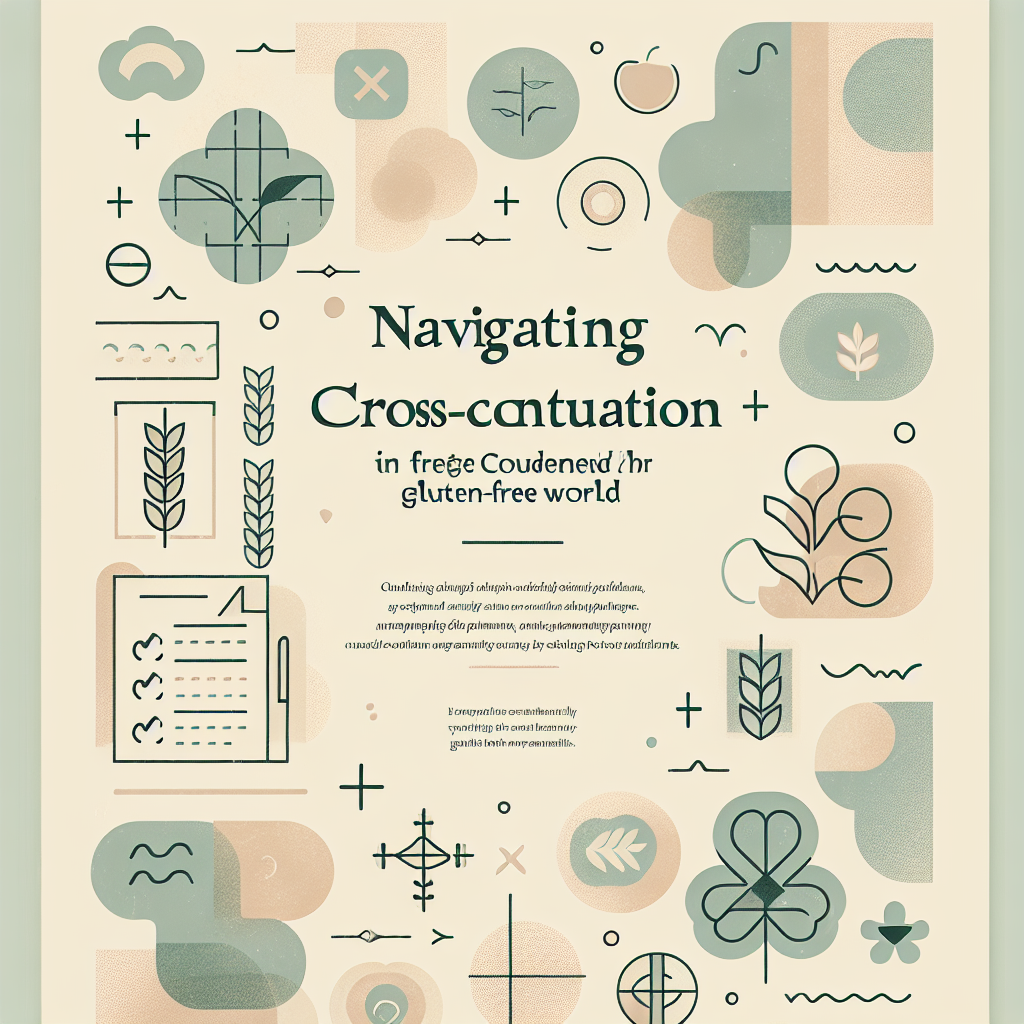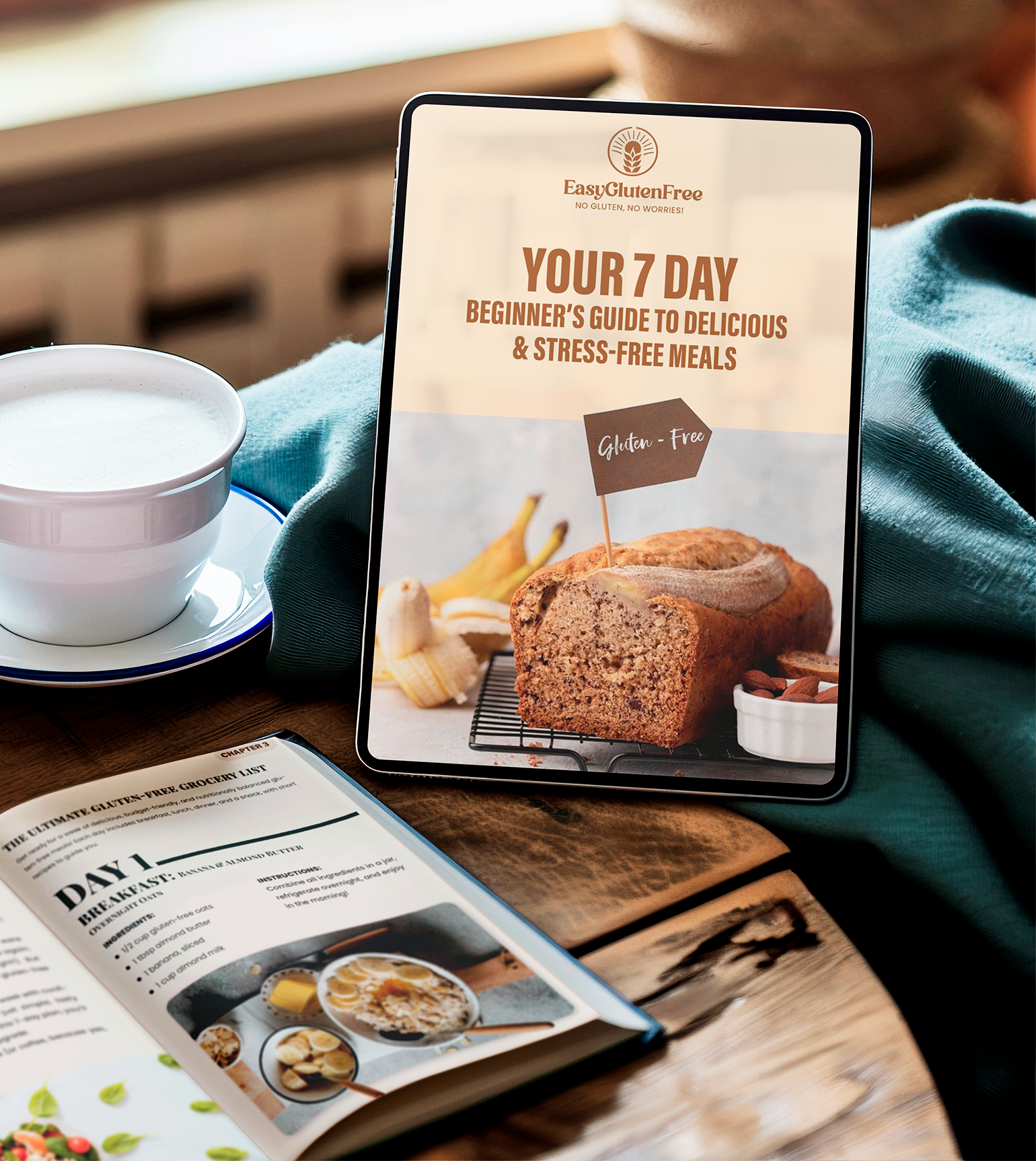Ah, the gluten-free life! It’s a journey paved with tasty adventures, unexpected challenges and certainly its fair share of eye-opening experiences. Anyone who’s committed themselves to a gluten-free lifestyle knows well what I’m talking about. Some days, you discover a delicious new gluten-free bread and feel triumphant, other times, you’re trying to decode a complex food label in the middle of a crowded grocery store, wondering if the third ingredient from the end is secretly gluten in disguise. It’s all part of the gluten-free expedition and, friends, I am here to navigate the murky waters of gluten-free-label-reading with you.
Today, we’re going to tackle a very common, but sometimes overlooked issue in our gluten-free world: cross-contamination. Maybe you’ve encountered this sneakily problematic situation when dining out or even at home in your own kitchen. You know how it goes. A stray breadcrumb somehow found its way into your otherwise perfectly safe gluten-free meal, or your gluten-eating family members liberally used your dedicated gluten-free toaster. In both situations, you’re left with an uncomfortable gluten-induced reaction. Yes, cross-contamination happens, but it is entirely preventable.
So, let’s take a proactive stride in this ever-demanding gluten-free life and learn how to successfully avoid gluten cross-contamination.
Remember when we discussed the different faces of gluten in my previous post about [Understanding Different Types of Gluten](#)? Yes, just like that tricky comic book villain with myriad disguises, gluten has different forms and names, lurking in your food sources. However, we can conquer this omnipresent fiend and reduce chances of cross-contamination by having a detailed understanding of where gluten can hide and how it can reach our food.
An important first step is to start at home. Now, you may be wondering, “Claire, my house is a gluten-free haven. What do I need to worry about?” Well folks, here lies the crux of the cross-contamination issue. Sometimes, the things that we take for granted in our gluten-free environment can cause accidental gluten exposure. I’m referring to common kitchen tools like toasters, cutting boards, and utensils.
Even something as simple as a butter dish can turn into a source of gluten cross-contamination. Picture this: a family member makes a sandwich using regular bread and then dips the knife into the butter dish for a second helping of butter. Some bread crumbs hitch a ride and make their new home in your supposedly gluten-free butter. Boom! Cross-contamination.
To avoid such situations, consider having separate, clearly labeled kitchen tools for gluten-free foods. Especially in households where not everyone is following a gluten-free diet, this can be a lifesaver. Try using colored stickers or even dedicated cupboards to store your gluten-free dishes, cutlery, and food items.
If you’re generous with sharing your kitchen space and appliances, it’s crucial to ensure they are thoroughly cleaned between uses. And by thorough, I mean meticulous! Toasters, in particular, are notorious crumb reservoirs. So, if you’re sharing a toaster, do consider owning a dedicated gluten-free toaster or using toaster bags to protect your gluten-free bread.
Moving from home, let’s navigate to the outside world. Dining out is a delightful social experience that shouldn’t be dulled by the pain and discomfort of accidental gluten ingestion. In fact, I’ve shared some [great tips for gluten-free dining out](#) before. But, let’s go a step further and talk about preventing cross-contamination while eating at restaurants.
Before placing an order, it’s a good idea to inform the server about your dietary restriction. Now, this may seem unnecessary, but remember dear reader; it is your health at stake here. Many restaurants are now well-prepared to handle gluten-free requests, but it’s important to check.
Ask if they have a dedicated gluten-free prep area and fryer. Yes, the dreaded shared fryer, another common source of cross-contamination. French fries, onion rings, and chicken nuggets all frying together in the same oil is a gluten-free eater’s nightmare.
Grocery shopping is another terrain where you need to watch out for gluten booby traps. Watch out for bulk bins especially. Just because something should be gluten-free doesn’t mean it hasn’t been in contact with gluten. Nuts, dried fruits, beans, or rice can all potentially be cross-contaminated if they’re stored in bulk bins where glutenous products are also housed.
As you roam the aisles, also pay attention to the foods shelved above your gluten-free favourites. Crumbs, especially from bread or cracker packages, could potentially fall into bags or bins of loose items like fruits and veggies.
Cross-contamination seems like a daunting possibility everywhere, but knowing what to watch out for makes it less scary. With a thorough understanding of the possible sources and proactive measures, you can greatly reduce the chances of inconveniencing your gut health and continue the positive strides on your gluten-free journey!
Remember, my dear gluten-free folks, cross-contamination does not spell inevitable doom. It’s an obstacle that can be overcome. As you take measures to avoid it and continue exploring our gluten-free lives together, always keep in mind that any loving relationship (even one with food) needs education, understanding and loads of patience.
Until our next adventure, remember that being gluten-free is not just a limited diet, it’s a whole new exciting perspective to enjoy food!
**Category: Health & Wellness**



